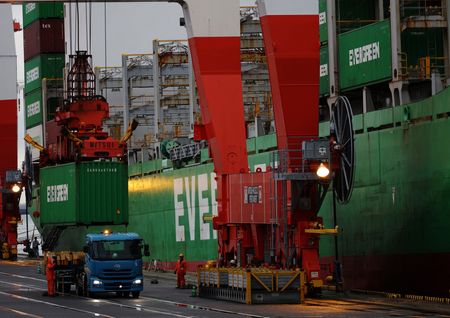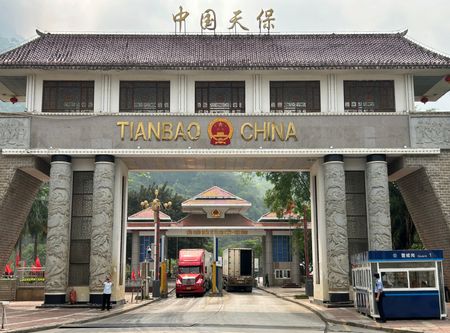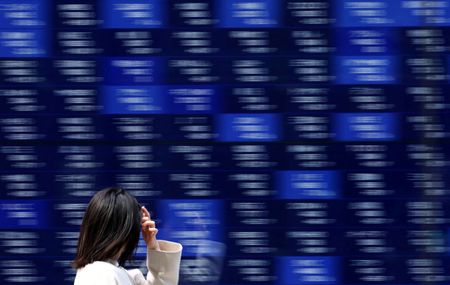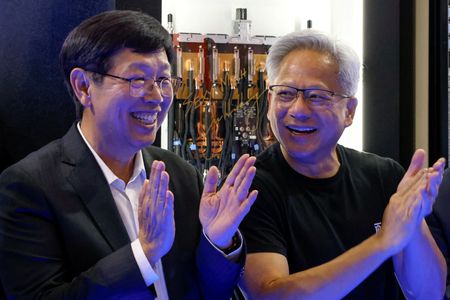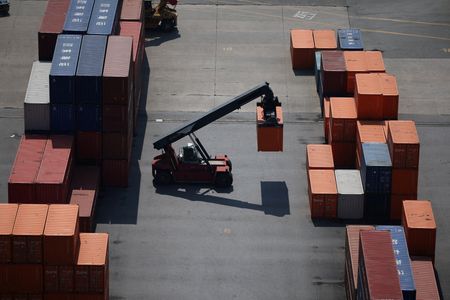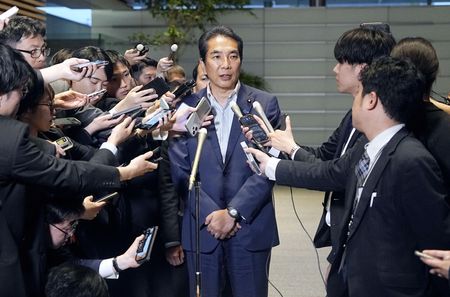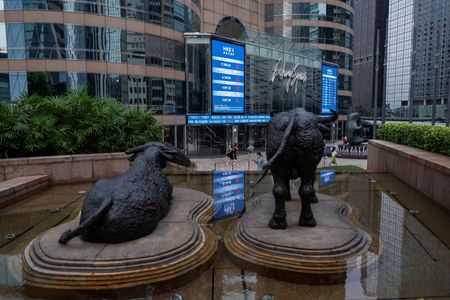By Leika Kihara
TOKYO (Reuters) -Japan’s export growth slowed in April, weighed by a decline in shipments to the U.S. as businesses in the world’s fourth-largest economy braced for the hit to a fragile economic recovery from President Donald Trump’s tariffs.
While analysts are not yet certain just how much Trump’s new tariffs have hurt U.S.-bound exports so far, they expect the pain to intensify later this year unless Tokyo can convince Washington to cut levies.
Japan’s top trade negotiator, Ryosei Akazawa, is expected to travel to Washington later this week for a third round of trade talks with the U.S., though analysts say prospects for a breakthrough in slashing steep automobile tariffs are slim.
“Trump’s tariffs will likely exert direct and indirect downward pressure on exports,” said Masato Koike, senior economist at Sompo Institute Plus.
“Even if bilateral trade talks go well and lead to some drop in tariffs imposed on Japan, it’s hard for Japan to avoid the indirect impact from a worsening global economy,” he said.
Japan’s total exports rose 2% in April from a year earlier, matching a median market forecast but slowing from a 4% increase in March, data by the Ministry of Finance showed.
Shipments to the United States, Japan’s biggest export destination, fell 1.8% in April from a year earlier to mark the first drop in four months on declining demand for automobiles, steel and ships.
Exports of automobiles to the U.S. fell 4.8% in value due to the impact of the yen’s rise and declining shipments of high-end models, the data showed.
“Exports to the U.S. were rising until March, as automakers likely increased shipments before tariffs roll in. With tariffs now in place, we’re now seeing a reversal of the move,” said Yutaro Suzuki, an economist at Daiwa Securities.
While exports to Asia rose 6.0%, those to China were down 0.6% on soft demand for automobiles and electronic parts.
Imports fell 2.2% in April from a year earlier, less than a 4.5% drop expected by analysts. As a result, Japan marked a trade deficit of 115.8 billion yen ($802.77 million), dashing expectations for a 227.1 billion yen surplus.
Japan saw its trade surplus with the U.S. rise 14.3% in April from a year earlier to 780.6 billion yen, marking the fourth straight month of increase, the data showed, as imports from the U.S. also fell.
That may draw scrutiny from Trump, who has focused on shrinking America’s huge trade gap with Japan and has accused Tokyo in the past of intentionally keeping the yen cheap to give its exports a competitive advantage.
Japanese Finance Minister Katsunobu Kato is expected to meet his U.S. counterpart Scott Bessent on the sidelines of a G7 finance leaders’ gathering in Canada this week, where the two are likely to discuss the thorny topic of currency policy.
DARKENING OUTLOOK
In April, Trump imposed 10% tariffs on most countries, along with higher tariffs for many big trading partners, including Japan, which faces a 24% tariff rate starting in July unless it can negotiate a deal with the United States.
Washington has also imposed 25% levies on cars, steel and aluminium, dealing a huge blow to Japan’s economy, which relies heavily on automobile exports to the United States.
Japan produces 9 million cars annually at home and ships about 1.5 million of them to the United States. Furthermore, Japanese automakers export more than 1.4 million cars to the United States from Mexico and Canada.
The uncertainty caused by Trump’s tariffs may also prod firms to delay investment plans, which would add to pains for an economy that suffered a contraction in January-March.
“Japan’s manufacturers are deeply integrated into global supply chains, so trade policy flip-flops risk creating whiplash that would ripple through the economy, hurting growth,” said Stefan Angrick, an analyst at Moody’s Analytics. “In all, Japan’s manufacturers are in for a tough time.”
The darkening economic outlook also complicates the Bank of Japan’s decision on when to resume interest rate hikes.
Escalating risks from U.S. tariffs forced the BOJ to sharply cut its growth and inflation forecasts on May 1 and have cast doubt on its view Japan’s economy will resume a moderate recovery, allowing it to hike borrowing costs again.
Abhijit Surya, an economist at Capital Economics, expects net exports to remain a drag on second-quarter economic growth.
“Given that the Japanese economy was already in a soft patch before U.S. tariffs kicked in, the BOJ will likely want greater certainty about the tariff landscape before it resumes its tightening cycle,” said Surya, who pushed back the expected timing of the next rate hike to October from July.
($1 = 144.2500 yen)
(Reporting by Leika Kihara; Editing by Sam Holmes)

